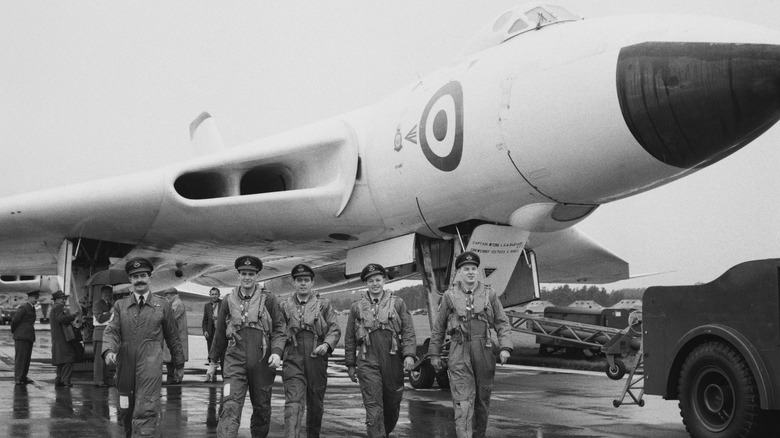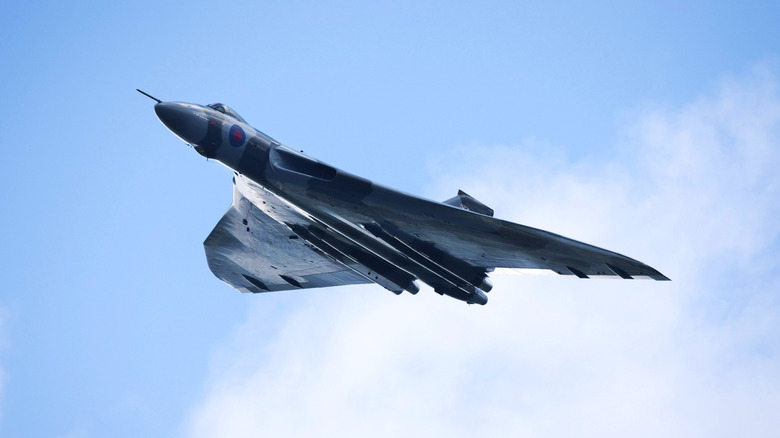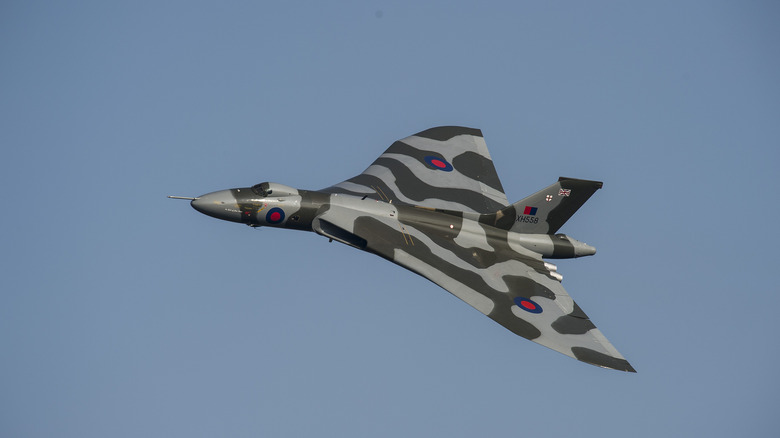The Avro Vulcan: The British Strategic Bomber That Continues To Amaze Aviation Enthusiasts
Air shows are about, first and foremost, the sheer spectacle. The unique thrill of seeing a particular favorite or rare aircraft in action. Just as an experienced birdwatcher would recognize the distinctive wing shape of a white-tailed kite immediately, aviation enthusiasts can do just the same. They can distinguish everything from engine sounds to cockpit shape about the aircraft they adore at fifty paces. Well, at several thousand feet, in fact.
Of course, some aircraft are rather more distinctive than others. The futuristic yet ultimately tragic Concorde's mighty nose cone, for example, is all but unmistakable. So, too, is the unique design of the Avro Vulcan, a formidable bomber from the golden age of British aviation design.
The Vulcan lacked a tail and sported one of the sheerest delta wing designs in history, as well as trademark howls from the engine. "The howl is unique to the 200 series airframes. It is caused by approximately 100 kilos of air per second being sucked through a square hole which then changes into a smaller oval hole and then a slightly smaller round hole," technician Sam Evans explained in Vulcan To The Sky.
The Avro Vulcan resembles the basic default shape that many will fold a paper airplane into. Nevertheless, it was brutally effective in combat during its time in service and boasts some iconic traits that made it a popular sight at air shows.
The birth of the Avro Vulcan
In the aftermath of World War II, the world faced a frightful new nuclear threat. Nations had to forge relationships anew and find their place among their neighbors and global society while being aware of the formidable weaponry even once close allies could now be wielding.
As nuclear arsenals developed and were bolstered in the late 1940s, Forces reports the British government announced the need for "a medium range bomber landplane capable of carrying one 10,000 lb bomb to a target 1,500 nautical miles from a base which may be anywhere in the world." That formidable strategic bomber would ultimately be the iconic Avro Vulcan.
Avro, the manufacturer of the similarly renowned Lancaster bomber, developed the aircraft. As Imperial War Museums on YouTube explains, it was conceived "in the early stages of the Cold War as a nuclear high-level bomber." Other bombers, such as the Vickers Valiant, were designed by competing manufacturers in response to this brief, but most did not advance past the prototype stage. After the Valiant – which IWM host Liam Shaw described as a "fairly conventional aircraft [which] ... didn't progress very far due to a change in tactics and fatigue life" – came a far more iconic V bomber: The Vulcan.
What makes the Avro Vulcan so iconic?
The first Vulcan test flight took place in late August 1952, piloted by Wing Commander Roland "Roly" John Falk. According to BAE systems, it was quite the showing, with the aircraft demonstrating its speed, agility, and formidable engine (some of the facility's windows were broken by the latter, it seems).
A little over a year later, a refined prototype took flight. In 1956, the Avro 698 Vulcan B.1 officially joined the ranks of the Royal Air Force, equipped with what has reportedly been deemed the Phase 2 wing (which bolstered the aircraft's stability when approaching its top speed). Though it was an important part of Britain's nuclear arsenal, this was more of a deterrent measure. Instead, it was a standard bomber, and a monstrously potent one at that: during the Falklands War, it was the basis of the devastating Operation Black Buck bombing campaign, the most prolonged such campaign in RAF history.
B.1 and B.2 Vulcans continued to see use in some capacity in the RAF until 1984. The extraordinary aircraft was an offensive powerhouse through and through, and its unique design seemed to pave the way for future stealth jets and bombers. According to a March 1982 issue of New Scientist, its compact and sleek design meant that it could "virtually vanish from the radar screen at certain angles, despite the fact that it was designed long before such factors were taken into account." It was an extraordinary piece of hardware.


